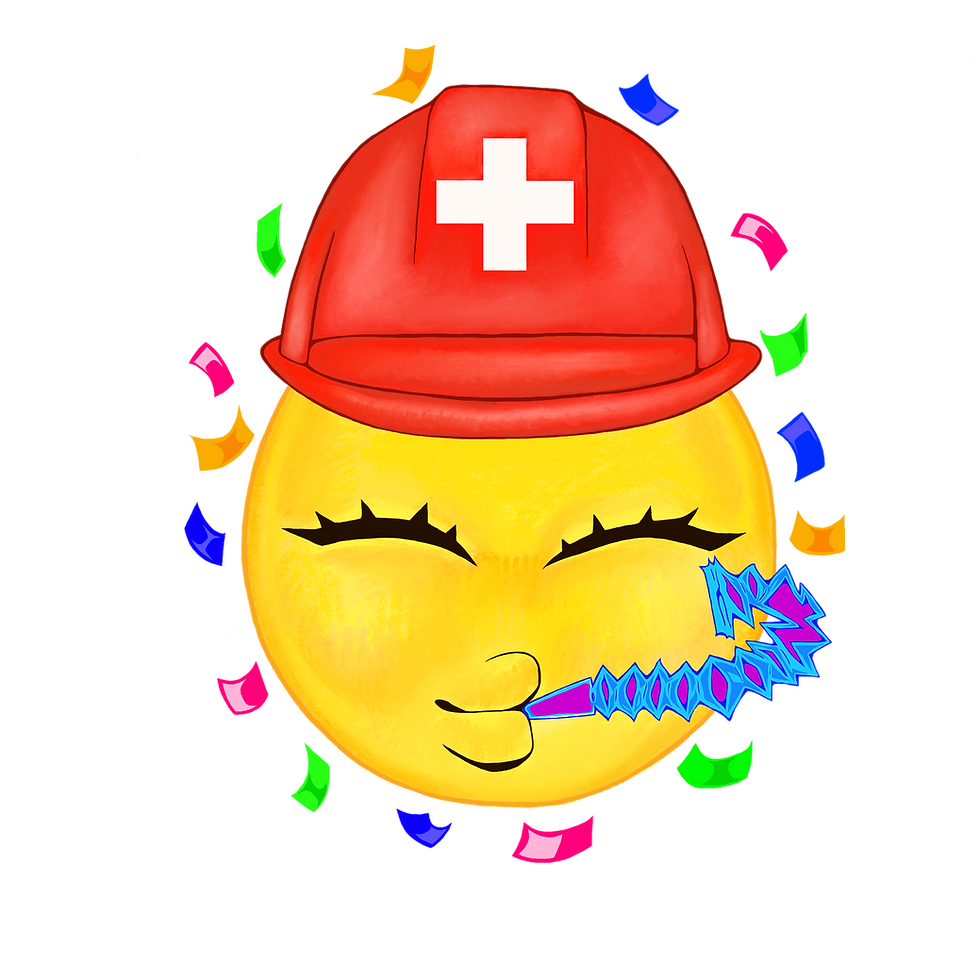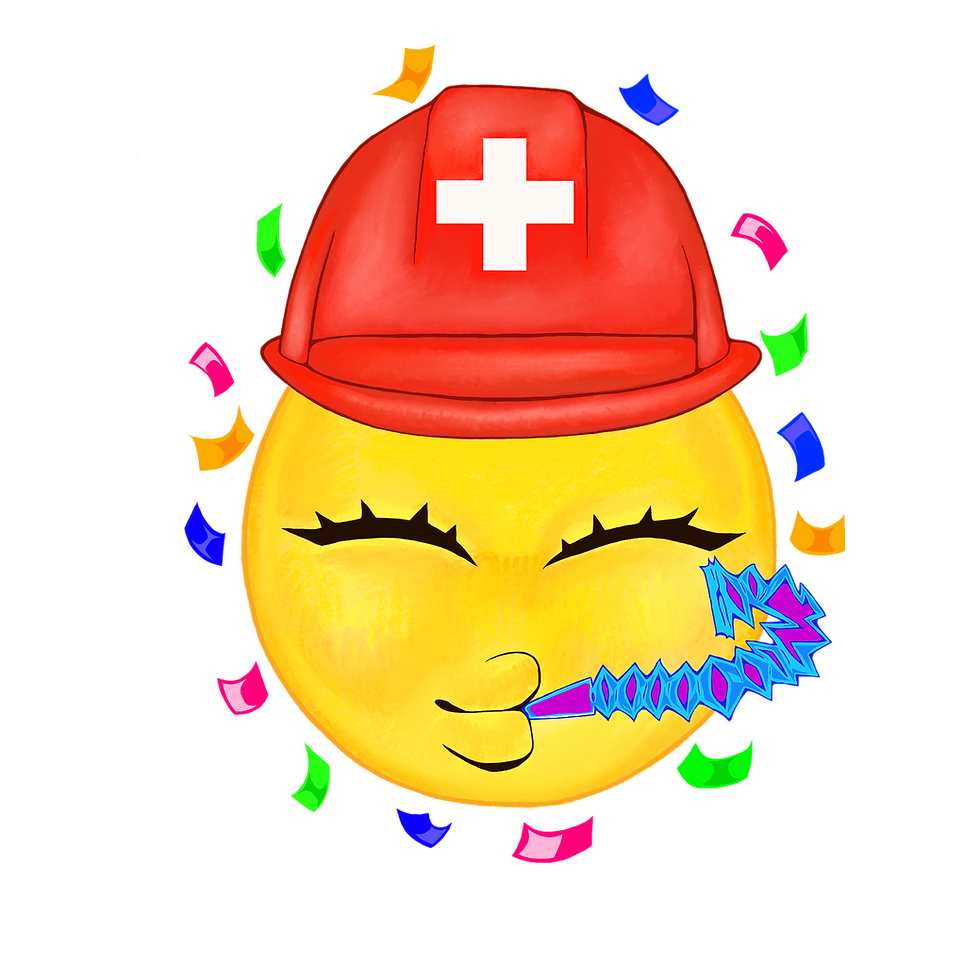PartySafe Medics Statement on "One Big Beautiful Bill Act"
- partysafemedics
- Aug 30
- 5 min read
Our statement on the “One Big Beautiful Bill Act”, and how we will meet this moment
We are outraged and gravely concerned about the consequences this bill's passing will have for party-goers and spaces in NYC. Party and rave scenes that celebrate queerness, neurodivergence, self-expression, creativity, diversity, stand to suffer on the individual and community level.
There is no honest way to give a “neutral” stance on this bill. So instead, here’s the reality:
7 of New York State’s Congressional Representatives gave the GOP the deciding votes to pass a bill that intends to make Medicaid and SNAP work requirements far more stringent; so much so, that an estimated 11.8 million - 20 million Americans nationwide are expected to be squeezed out of their benefits (AHA, 2025).

In doing this, they voted to confiscate healthcare coverage from nearly 300,000 of their own voters, increase their premiums by $233/month, and reduce hospital revenues by $465 million in those communities. And they took benefits from an estimated 1.2 million other NYers, and $13 billion in hospital revenues, with them (NYSDOH, 2025).
New York City residents make up nearly 60% of the state’s Medicaid enrollees, and approximately the same percentage of the state’s Medicaid expenditures (David, 2025).
Because state Medicaid programs rely on pools of money from federal funding, tax revenue, and monthly premiums payments, major federal cuts to federal funding leave states and cities with lose-lose options:
Raise taxes and/or monthly insurance premiums to boost revenue
Cut vital (but federally non-required) benefits to reduce payments to providers
Decrease the sizes and scopes of public healthcare systems, hospitals, community health clinics, emergency services, to reduce total governmen healthcare “cost-burdens”
A combination of the above (Center for American Progress, 2025)
And here’s the worst part:
Because public health insurance is set to become significantly more expensive and less comprehensive (both on multiple fronts), we will see more and more people opt out of health coverage altogether, even if they meet Medicaid’s new work requirements.
The “pools” of state funds will then gradually shrink in a self-reinforcing way, accelerating healthcare job losses, services closures, and deterioration of community health overall with time; the final culmination of which is expected by 2034.
To vote for this bill is to vote to take healthcare and benefits away from many of their poorest constituents and their families and sentence them to years (if not decades) of suffering. Like the 7 Reps in New York, the federal government knew this, because the Congressional Budget Office warned them (CBO, 2025). They voted for it anyway.
In the United States, partying is political; but healthcare may be the most political aspect of our daily lives. The healthcare services we’re entitled to directly represents a reflection of our perceived “worth” to society by the government (or our employers). They reflect which people and different backgrounds, identities, levels of “productivity” are “deserving of healthcare” according to those in charge, and those who aren’t. Healthcare access, and health outcomes, separate the “haves” and “have-nots” in America.
But if there’s any silver lining, it’s this: we will keep us safe. Communities will come together and survive. We will find ways to get folx the medical supplies and care they need and deserve.
And we’re ready to fight.
First, PartySafe Medics is committed to prioritizing event medic services for local mutual aid organizations, grassroots movements and campaigns, fundraisers, and creative collectives.
To this end, we are:
Building relationships with local collectives and organizations
Offering steeply-discounted hourly sliding-scale rates for relevant groups
Committing to learning, growth, skills-training, improving, and staying up-to-date on sociocultural developments
Secondly, in an effort to minimize the need for formal medical transport and doctor’s visits, we’re going to:
Offer a broader range of Over-the-Counter medications for various ailments
Provide referrals for free medical, behavioral health, sexual health, and harm reduction services upon request and suggestion
Restructure our safety/contingency planning in case of emergencies, in collaboration with party hosts and venue managers.
We will also focus greatly on reviewing city and state healthcare and public health regulations to find loopholes on what we can and cannot do, equipment we can or cannot own, medications we can or cannot distribute, and interventions we can or cannot perform, and exploit those loopholes to the fullest extent. We are harm reductionists before we are EMTs.
Next, we’re going to invest heavily in getting as many harm reductionists as possible to enroll in EMT-Basic training and certification courses. Doing so will dramatically broaden their skill-sets, authorize them to provide more comprehensive medical care and interventions in-the-field, and teach them about the human body and healthcare in non-replicable ways.
Most EMT courses take 4-6 months (as a part-time student) and cost approximately $2,500-$3,500 each. By allocating part of our revenue earnings into a designated fund, collaborating with partners to create scholarships, and developing relationships with EMT course providers themselves, we can help lower student costs substantially.
Lastly, but most importantly, we will continue to stand in solidarity on the frontlines of political struggle. That means:
Providing medic services for protests and protestors, and being available for jail support
Refusing to provide medic services for authorities/law enforcement (unless on-duty with an ambulance corps)
Restructuring from an LLC to a 501(c)(3)
Using our voices and medical expertise to condemn the assaults on the US healthcare system and on those of other lands (Gaza)
Advocating for local regulations requiring venues and event hosts to provide medic services, free water, snack options, and adequate bathrooms based on capacity
Undertaking outreach projects for harm reduction, overdose prevention and intervention, wound care, brief (free) exams, distributing medical and hygienic supplies
As healthcare professionals, public safety officers, and, most importantly, harm reductionists, we have obligations to help New Yorkers navigate and fight against an unequal and exploitative healthcare system, and to warn the public when the city’s, state’s, and/or federal government’s actions are bound to threaten their health, safety, livelihoods, and families.
With a federal government that is so egregiously uncommitted to the wellbeing of its citizens, elected officials who are willing to make the lives of their own voters significantly harder and sicker in service of the wealthy, a president who revels in the cruelty of his and his administration’s actions, a mayor who is his puppet, and an ever-growing gap of healthcare quality and outcomes between public and private insurance enrollees, we cannot abdicate our responsibilities by staying silent; even at the risk of turning-off prospective clients.
But if there’s any silver lining, it’s this: we will keep us safe. Communities will come together and survive. We will find ways to get folx the medical supplies and care they need and deserve.
And we’re ready to fight.
---
Works Cited
“House Passes Final Version of One Big Beautiful Bill Act: AHA News.” American Hospital Association | AHA News, 3 July 2023
“NY Healthcare Impacts By Congressional District.” ArcGIS Dashboards, New York State Department
David, Greg. “What Trump’s ‘big Beautiful’ Bill Means for NYC.” THE CITY - NYC News
Ives-Rublee, Mia. “Federal Medicaid Cuts Would Force States to Eliminate Services for Disabled Adults, Older Adults, and Children.” Center for American Progress
“Distributional Effects of H.R. 1, the One Big Beautiful Bill Act.” Congressional Budget Office


Comments